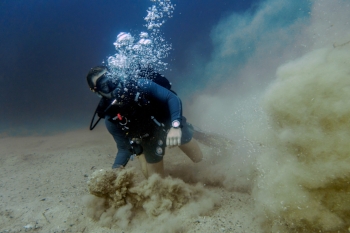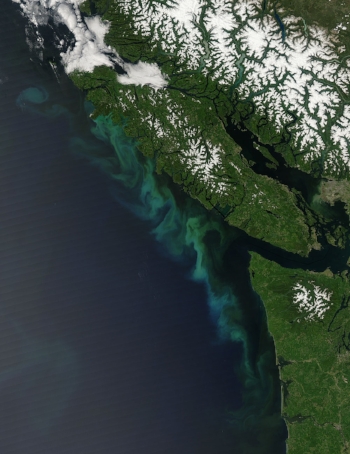What Causes Bad Water Visibility in the Summer?
We have all had those dives where you get in the water, ready to explore the incredible BC aquatic life, and all you see is murky green and dark shadows moving in the distance. It is an unfortunate reality that sometimes, the visibility just sucks!
However instead of giving up and going on a nice tropical holiday to Mexico or the Caribbean, knowing what factors cause the poor vis can help you plan your dive accordingly and allow you to still get a lot out of the dive!
Below we look at the key contributors to poor visibility here in BC, and how we can work to prevent them or at least avoid the murkiness they cause.
Tidal Exchange
Tide Table
The ebb and flow of an incoming or outgoing tide can cause a shift in the quality of visibility in the water. This is due to the large volume of water moving particles and silt from the ocean bed, causing the water to become thick with sediment. To get around this issue, try to plan dives so that you are going to dive during high or low tide (known as slack tide), when the water is at its calmest. However be careful when planning this because if you go in before high or low water, or stay too long after - the movement of the tides can cause other issues such as strong currents and riptides. To find out what time the tides are for a local site, there are plenty of websites and apps you can search online.
Windy, Stormy Weather
The bottom composition in most area of coastal BC is such that it is easily disturbed and can float like a cloud in the water column. This is why we see the visibility drop when we have large weather storms with high winds or heavy rain. The bad weather causes movement and turbulence in the water, which stirs up the bottom and creates bad visibility, particularly at shallower depths. Diving sites which are sheltered and protected against high winds will cause less disturbance in the water. Also, if you are able, waiting a day or two after there has been heavy rain will allow enough time for the disturbed sediment to settle down and help improve the visibility.
Dive buddies
Another cause of bad visibility are know as 'silt miners'. These are dive buddies that kick up the bottom causing silt clouds to form. If everybody in your dive group complains about bad vis and you had great vis, then you are likely a silt miner! Practicing good buoyancy skills, seen in the Peak Performance Buoyancy Specialty Course, can help prevent kicking up silt and disturbing the underwater environment. Also diving in smaller groups rather than one large group, will reduce the risk of divers kicking up a silt cloud.
The bloom
PHYTOPLANKTON BLOOM OFF VANCOUVER ISLAND, BRITISH COLUMBIA
The fourth kind of visibility destroyer is the dreaded summer plankton bloom. This is caused by high level of nutrients in the water and lots of sunlight. These conditions can cause the rapid growth of phytoplankton creating clouds that block out visibility and light sometimes up to 60 ft/20m of depth. This creates night dive conditions for scuba divers, so carrying a good Dive Light is a must! It also means that to get better visibility you need to descend to deeper waters below the cloud. Once to get deep enough, the cloud will clear and the nice visibility will return, although it is still pretty dark due to the lack of sunlight penetrating the plankton cloud. In recent years the blooms conditions were so bad that it was visible from space!
A word of caution
There are hundreds of species of phytoplankton, and some of them carry paralytic shellfish-poisoning toxin, known as red tide. If you see signs posted about this heed the warnings and consider skipping the dive in these areas.
Runoff
A final factor that can cause poor visibility is when you get freshwater runoff from the land and mountains. This freshwater will run down into the Ocean dive sites and the mix of fresh and salt water will cause turbulence, again resulting in bad vis. The runoff will also carry with it lots of sediment, such as soil and plant life which will contribute to the murky, cloudy nature of the water. In BC this is particularly common around spring time, where the runoff from the mountains as the snow melts, or from heavy rainfalls, will filter down into the ocean. Try to visit sites which aren't nearby common runoff areas, such as river mouths. Similar to the bloom above, this poor visibility will also improve as you descend deeper, and as you go further away from the shoreline.




